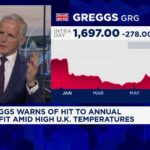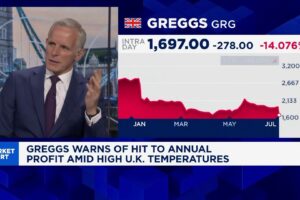
Treasury yields kicked off the new year Monday with a rise, after the rate on the 10-year note saw its biggest yearly rise since 2013 as investors await developments on inflation and the Federal Reserve’s policy response.
What are yields doing?
- The yield on the 10-year Treasury note TMUBMUSD10Y, 1.532% was at 1.536%, up from 1.496% at 3 p.m. Eastern on Friday. Yields and debt prices move opposite of each other.
- The 2-year Treasury note yield TMUBMUSD02Y, 0.773% was 0.758%, compared with 0.73% on Friday afternoon.
- The 30-year Treasury bond yielded TMUBMUSD30Y, 1.916% 1.924%, up from 1.888% on Friday.
- The 10-year yield saw its largest annual rise since 2013, according to Dow Jones Market Data, while the 30-year yield posted the biggest rise since 2018 and the 2-year’s rise was the largest since 2017.
What’s driving the market?
Yields rose in 2021 as investors assessed a surge in inflation, fueled by strong consumer demand and exacerbated by supply-chain shortages, that proved stronger and more persistent than central bank policy makers had anticipated.
The Federal Reserve in late 2021 began scaling back monthly asset purchases, accelerating the wind-down in its policy meeting last month. The Fed is set to end monthly purchases in March, with investors penciling in rate increases to begin in the spring.
The yield curve, a line tracking yields across all Treasury maturities, flattened significantly in 2021. The spread between 10-year and 2-year Treasury yields widened to more than 160 basis points, or 1.6 percentage points, in March of last year, narrowing to less than 79 basis points by the end of the year, according to FactSet. A flattening curve can be a sign that investors fear that central bankers could move too aggressively, undercutting the economy.
Investors were also assessing a continued rise in COVID-19 cases driven by the omicron variant of the coronavirus that causes the disease. Over the past week, the average number of new U.S. cases has topped 400,000 for the first time, up more than 200% over the last 14 days, according to a New York Times tracker. Deaths have fallen by 3% over the same period.
Dr. Anthony Fauci, the government’s top infectious disease doctor, said Sunday that the focus should be on the number of hospitalizations, which could overwhelm health systems, rather than new infections. Many infections are mild or asymptomatic and scientists believe the omicron variant, while more infectious, may be less virulent than other variants. But other variants are also circulating.
Moreover, the risk of severe disease from any circulating variant, including omicron is much, much higher for the unvaccinated, Fauci warned last week.
The economic calendar on Monday includes the final Markit manufacturing purchasing managers index reading for December at 9:45 a.m. Eastern, while November construction spending figures are due at 10 a.m. Eastern. December jobs figures will be this week’s data highlight, with official data due on Friday.
What are analysts saying?
“The 10s-2s spread ended 2021 at 78 basis points. As we start 2022, the 10s-2s spread is more important than the absolute level of the 10-year yield, because that will continue to be our ‘real-time’ indicator of whether the markets think the Fed is removing stimulus too quickly,” said Tom Essaye, founder of Sevens Reports Research, in a Monday note.
A break below the spread’s recent low at 73 basis points “would be a negative technical signal and we’d expect further declines in 10s-2s which could pressure stocks,” Essaye wrote. “Instead, we want to see the 10s-2s spread move back towards 1% and signal that while the Fed is removing accommodation, the market isn’t concerned about it killing the recovery.”









